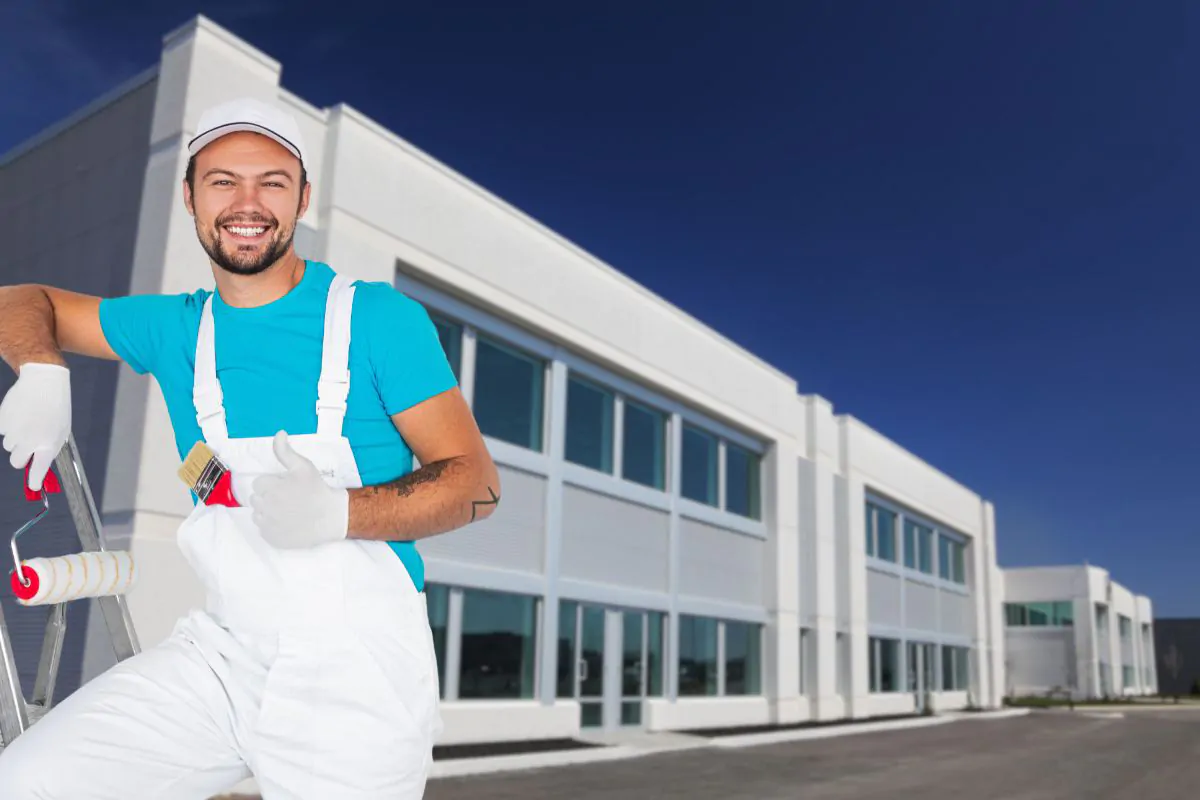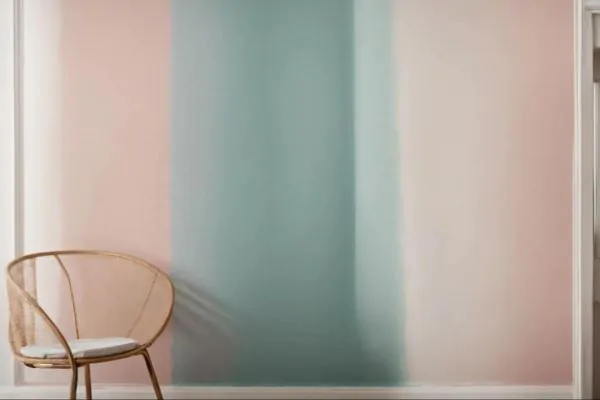When customers look to give their house’s exterior a fresh, durable finish, elastomeric house paint often surfaces as a leading choice. Boasting a robust composition that stands up to the elements, this type of paint acts as both a guardian and an enhancer of a home’s curb appeal.
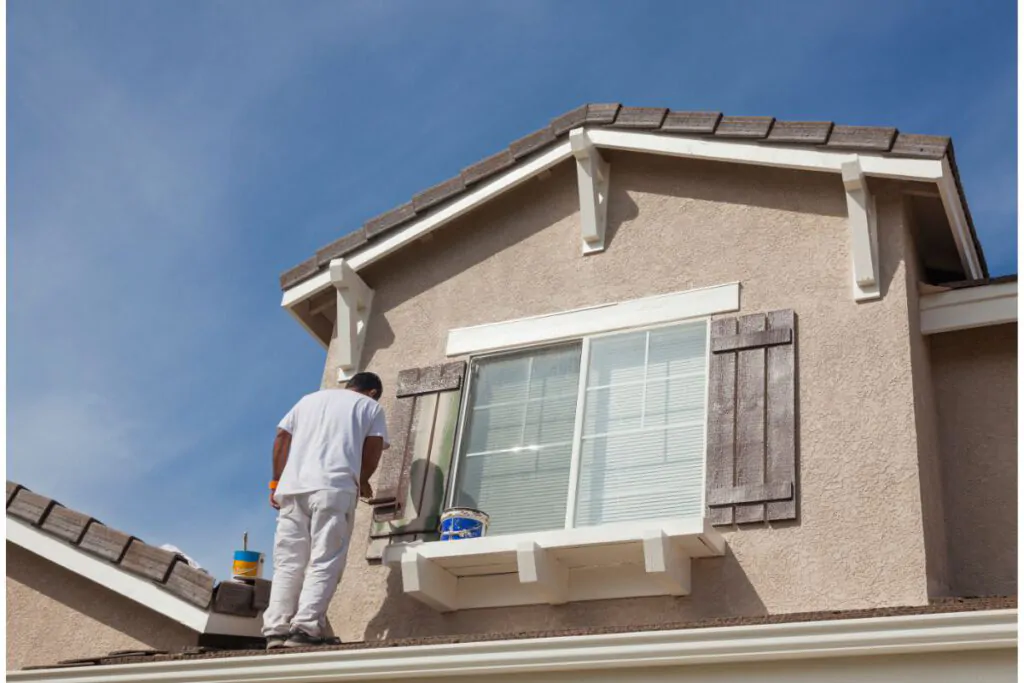
Yet, with its distinctive attributes come specific drawbacks, making a well-informed decision imperative for those pondering its use. Scrutinizing both the merits and limitations of elastomeric exterior paint will reveal the true value it can offer to homeowners.
Understanding Elastomeric Paint: Composition and Protective Mechanisms
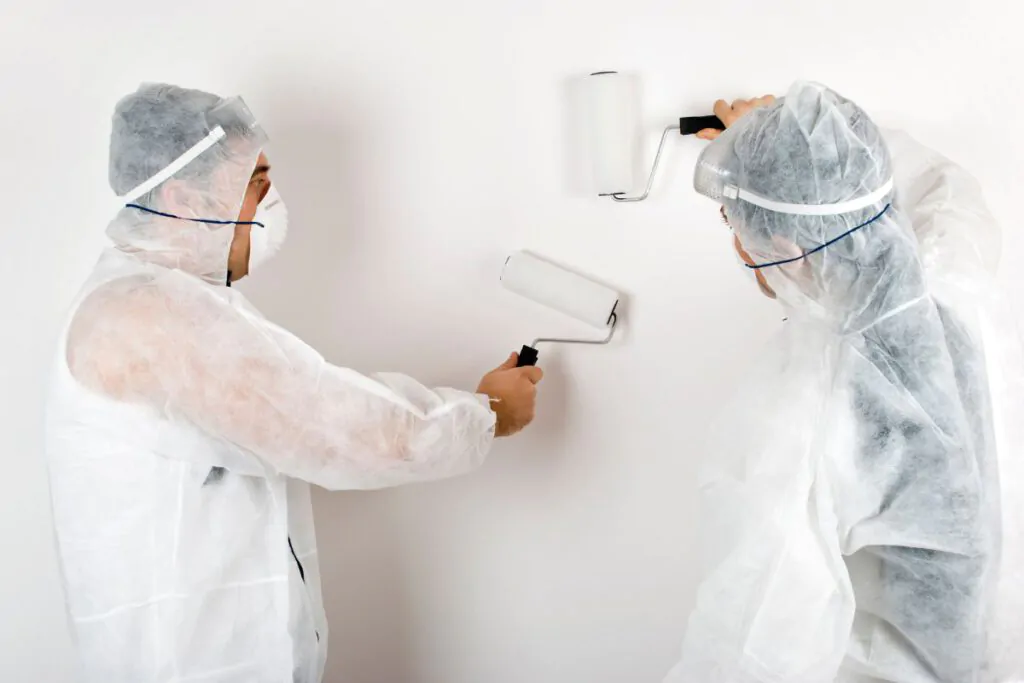
The realm of protective coatings for buildings has witnessed significant advancements, culminating in innovative products like elastomeric paint.
Renowned for its remarkable flexibility and resilience, elastomeric paint is a compound that has been meticulously formulated to adapt to the expansion and contraction of surfaces, all while offering steadfast protection against various elements.
As property owners explore options to shield their investments, understanding the components and protective mechanisms of the paint becomes paramount.
This entails an exploration into the unique constituents that segue into its intrinsic flexibility and a thorough examination of its formidable defense against environmental factors and weather conditions, ensuring the structural integrity and aesthetic appeal of homes remain intact.
Flexibility Unveiled: Examining the Components of Elastomeric Paint
The intrinsic characteristics of elastomeric house paint draw from its complex chemical makeup, rooted primarily in acrylic polymers that imbue the coating with remarkable elongation. These polymers intertwine to create a durable, waterproof membrane, which, upon curing, can stretch and return to its original shape without damage, unlike other types of house paints. This unique characteristic not only equips buildings with a formidable layer against moisture but also accommodates subtle shifts and movements within the building’s surface, maintaining an unblemished finish over time.
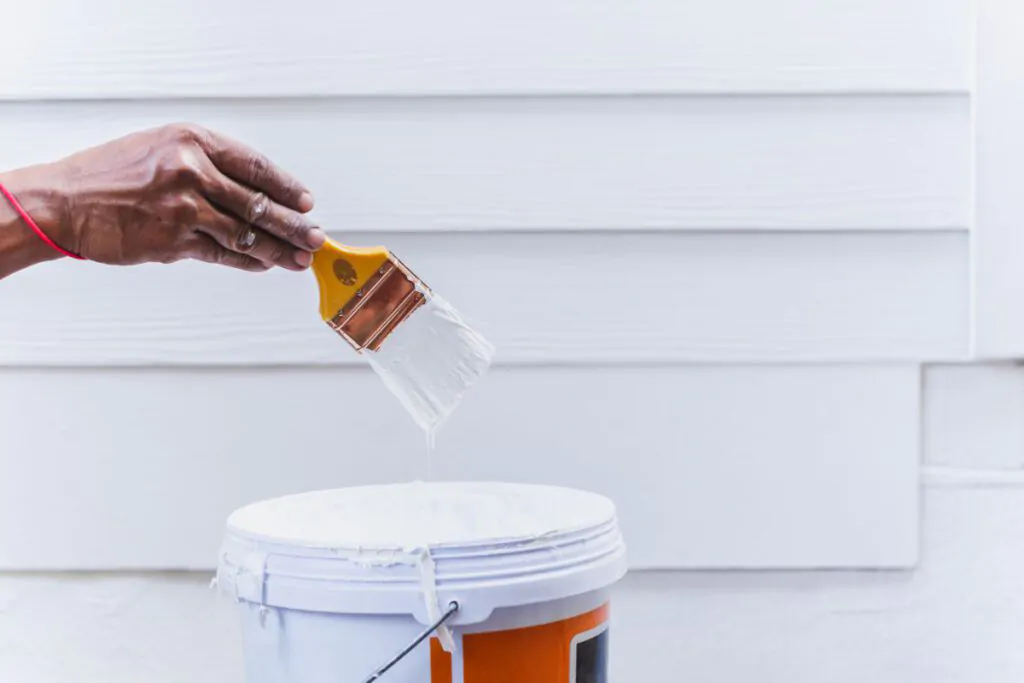
Elements at Bay: How Elastomeric Paint Safeguards Your Home
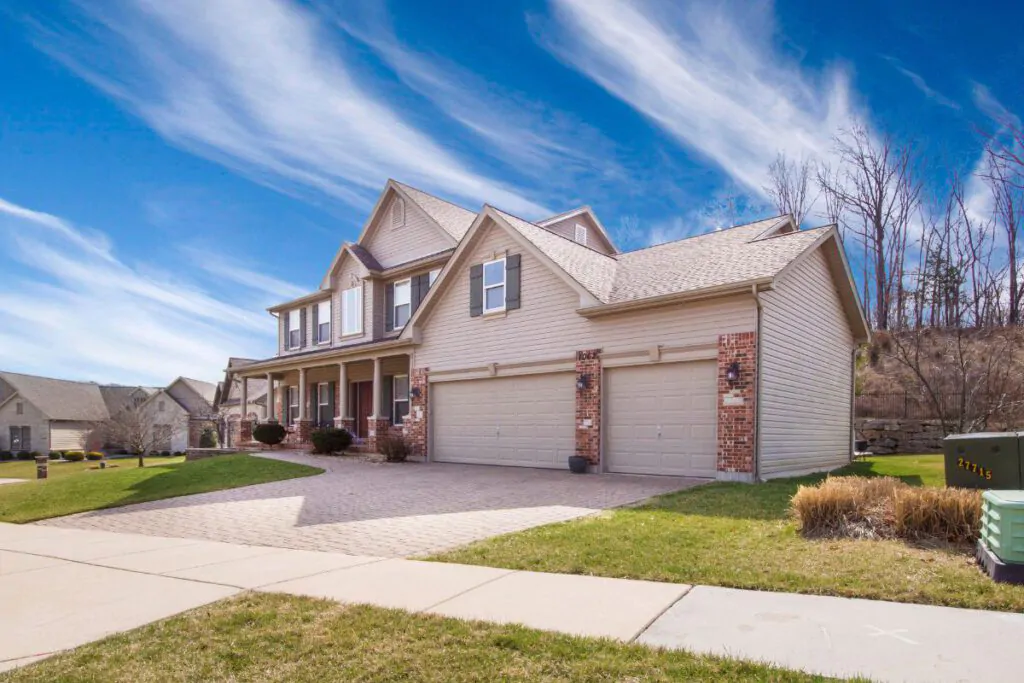
Elastomeric exterior paint acts as a guardian for homes, repelling the harshness of nature with its exceptional durability. The paint coating forms a defensive shield impervious to driving rain, beating sun, and fluctuating temperatures: a bulwark against the elements that often lead to costly repairs.
By creating a seamless barrier, elastomeric paint minimizes moisture damage and efflorescence, thwarting mold growth and decay that can undermine a structure’s integrity.
Its reflective properties deflect UV rays, contributing to cooler interior temperatures and reducing the strain on air conditioning systems.
The paint’s adaptability to temperature changes means fewer hairline cracks and peeling, preserving the aesthetic of a home’s exterior over time.
The Pros of Opting for Elastomeric Paint in Your Home
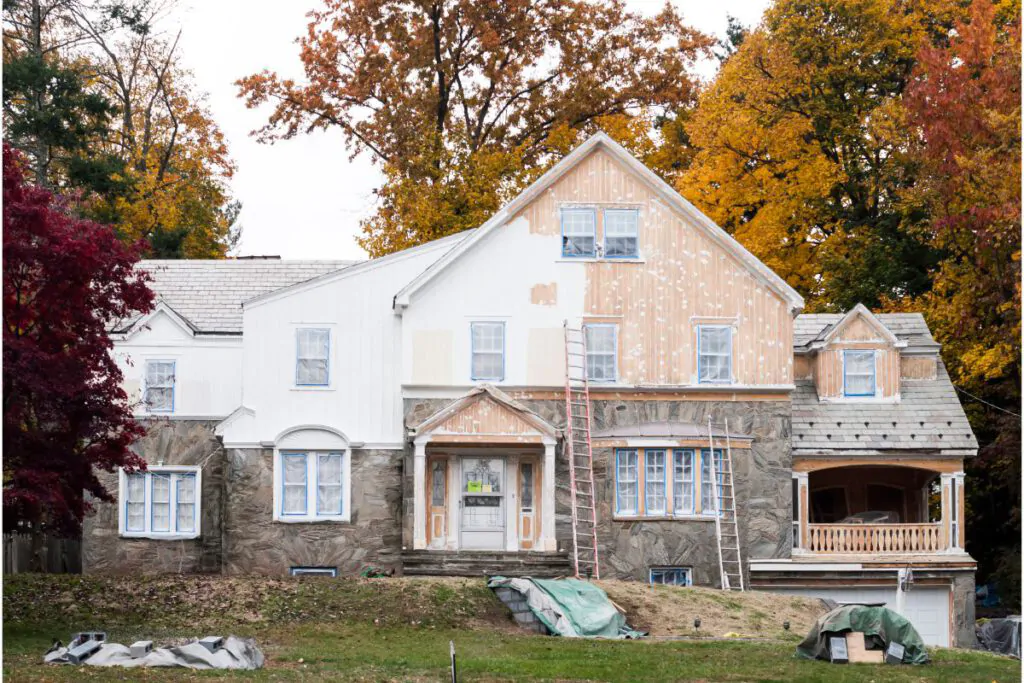
Elastomeric house paint is a testament to the harmonious blend of science and aesthetics in modern home maintenance.
Selecting this advanced paint option unlocks a myriad of advantages for property owners who seek unprecedented protection and longevity for their dwellings.
With these substantial benefits, elastomeric paint is not just a choice, but a strategic investment in the beauty and resilience of one’s property.
1. Waterproof Wonders: Guarding Surfaces Against Relentless Moisture
Occupants seeking sanctuary from the relentless assault of moisture find a stalwart ally in elastomeric paint. This impenetrable coating enshrouds surfaces in a waterproof veneer, effectively barricading the substrate from penetrating dampness that could otherwise usher in deterioration and mildew. It stands vigil, preserving the structural sanctity and comfort of any dwelling.
2. The Fortress Thickness: Exploring the Extra Layer Elastomeric Paint Provides
Elastomeric paint distinguishes itself from conventional options through its exceptional thickness, offering a robust layer of defense to any surface it graces. This coating solution, considerably thicker than standard paints, forms a resilient, armor-like barrier that stands up to the wear and tear of external forces.
3. Durability Beyond Measure: A Paint that Stands Strong Through Time
The impressive lifespan of elastomeric exterior paint transcends the norm, empowering structures to resist the relentless passage of time with grace. Coated surfaces defy the cyclical nature of wear and tear, retaining their integrity and appearance significantly longer than those treated with traditional paints. It is an embodiment of endurance, standing stalwart against the effects of sunlight, weathering, and mechanical abrasions, thus ensuring homes remain pristine for years to come.
4. Flexibility Unleashed: Embracing the Bendable Allure of Elastomeric Paint
The adaptable nature of elastomeric paint is an essential attribute for lasting surface protection. It allows the coating to stretch and move with the building, absorbing the dynamic forces at play without compromising the integrity of the paint film. This flexibility is crucial for maintaining a crack-free and uniform facade, providing a constant, elegant aesthetic no matter the environmental stressors.
· Elastomeric paint adapts to surface expansions and contractions, mitigating the risk of cracks.
· The paint maintains an even, smooth appearance despite external pressures.
· Buildings benefit from a persistent, protective barrier that moves with the structure’s nuances.
The Cons: Essential Considerations Before Choosing Elastomeric Paint
While elastomeric paint possesses attributes that bolster the fortifications of a home against the elements, discerning homeowners must weigh the balance of its merits with some intrinsic limitations.
As resilient as this coating may be, it is not impervious to the imperfections that accompany its use.
These pivotal factors—fading, cost, application intricacies, and conditional use—must be thoroughly considered to ensure that elastomeric paint serves as an asset, rather than a liability, to one’s property.
1. Fading Realities: Addressing the Fade Predicament, Especially in Dark Hues
The Achilles’ heel of elastomeric paint, particularly for those who favor darker shades, is its vulnerability to UV-induced fading over time. Notwithstanding its robust nature, the gradual loss of color vibrancy remains an unavoidable caveat, with sun exposure dulling the once vivid exteriors, compelling a consideration of environment and color choice before application.
2. The Weighty Cost: Unraveling the Price Tag of Elastomeric Paint
The investment in elastomeric paint is often significant, reflecting its superiority in quality and performance over standard paints. As one examines the cost implications, it is crucial to consider the long-term savings afforded by its exceptional durability and protective properties, which may offset the initial expenditure. Nonetheless, homeowners must scrutinize their financial plan, ensuring it aligns with the upfront costs associated with this high-grade coating.
3. Application Challenges: From Unwanted Lumps to Precise Surface Preparation
Applying elastomeric paint calls for skilled hands and scrupulous attention to detail, as uneven application can lead to a textured surface marred by lumps and ridges. Ensuring a smooth, seamless coat necessitates thorough preparation of the substrate, with imperfections carefully sanded and surfaces meticulously cleaned to uphold the integrity of the final appearance.
4. Limited Applicability: Surfaces and Scenarios Where Elastomeric Falls Short
Despite its impressive performance envelope, elastomeric paint is not the solution for all surface types. Its robust, thick composition may prove too heavy for certain materials or structures that require a more breathable, lighter touch, calling for a judicious assessment of the specific environmental factors and substrate characteristics before its deployment.
Seven Steps to Optimize Your Elastomeric Paint Investment
Embracing elastomeric paint for one’s property involves more than the decision to apply a superior coating; it is a commitment to a series of strategic measures that maximize the material’s potential.
Expertise in application, an understanding of product variations, a comprehensive approach to cost management, meticulous execution to avoid imperfections, thorough surface preparation, knowledge of color dynamics, and a clear plan for future maintenance are critical for optimizing the investment in elastomeric coatings.
These steps serve as pillars for owners seeking to harness the full spectrum of advantages offered by elastomeric exterior paint, ensuring a lasting, defect-free, and visually appealing outcome for their homes.
1. Seasoned Application: The Significance of Experience in Elastomeric Painting
The value of experience cannot be overstated when applying elastomeric coatings. A professional painter’s deft touch ensures even distribution, mitigating the risks of unsightly anomalies that compromise a building’s visual and structural integrity. Precision in this phase is paramount: it solidifies the foundation upon which the enduring qualities of elastomeric paint rest.
· Seek out seasoned professionals with a portfolio of successful elastomeric paint applications.
· Ensure the chosen contractor is well-versed in the techniques specific to elastomeric coatings.
· Professional application serves as the linchpin in realizing the long-term benefits of elastomeric paint.
2. Deciphering Descriptions: Navigating Through Quality Variations in Elastomeric Paint
Discerning the subtle differences among elastomeric paint varieties is a crucial aspect of ensuring superior performance for your exterior. A thorough examination of product specifications and manufacturer reputations enables homeowners to select a formula that offers the optimal balance of elasticity, durability, and climatic compatibility, thus avoiding the pitfalls of investing in subpar coatings.
3. Managing Costs: Balancing Expenses Against Long-Term Benefits
Insightful consideration of the initial and ongoing financial commitments of selecting elastomeric paint can pave the way for substantial cost savings over time. Homeowners who align elastomeric paint’s longer lifespan and reduced maintenance needs with their budgeting stratagem are positioned to achieve an advantageous cost-to-benefit ratio, making the upfront investment a prudent financial decision in safeguarding their exterior.
4. Lump Prevention: Ensuring a Smooth Finish Through Precise Application
The quest for a smooth elastomeric coating is foiled by improper application techniques that lead to unsightly lumps and uneven textures: a pitfall that can undermine both the protective qualities and visual allure of the finish. Mastery in the application process banishes these surface imperfections, securing a flawless facade that stands as a testament to the power of precision. Adhering to the manufacturer’s guidelines and employing the right applicator is vital in achieving an even, lump-free surface that not only protects but also enhances the property’s aesthetic value.
5. Comprehensive Preparation: The Key to Avoiding Peeling and Permeation
Thorough preparation forms the bedrock of an impeccable elastomeric paint job, ensuring a robust adherence that wards off future peeling and water penetration. By rigorously cleaning, repairing, and priming the surface, owners lay the groundwork for a coating that not only clings tenaciously but also seals meticulously against weather conditions. This preparatory stage is a critical investment in the longevity and effectiveness of the protective membrane elastomeric paint provides.
6. Fading Safeguards: Choosing Lighter Colors and Premium Acrylic Options
To mitigate the effects of fading, a strategic choice in hue can make a substantial difference. Opting for lighter colors lessens the visibility of UV-induced fading, while selecting paints with premium acrylic formulations enhances UV resistance, maintaining the vibrancy and integrity of the paint over extended periods of exposure. Thus, a need for a color consultation from a professional painter is a must.
Related Post: 7 Factors to Consider When Choosing Exterior Paint Colors
7. Repainting Strategies: Knowing When and How to Maintain Elastomeric Paint
Maintaining the pristine condition of a building treated with elastomeric paint entails vigilant monitoring and timely repainting efforts. An adept understanding of the coating’s life cycle and exposure conditions allows property owners to determine the ideal juncture for a maintenance coat, ensuring the continuous efficacy of the paint’s protective properties. Engaging in this proactive maintenance strategy keeps the aesthetic appeal untarnished while reinforcing the building’s defenses against the elements.
Expert Insights: Professional Counsel on Stucco and Elastomeric Paints
The conversation between professionals about the coating of stucco exteriors often centers around the judicious selection and application of elastomeric paints.
These specialized coatings serve as pivotal elements in the preservation and enhancement of facade substrates.
1. Elastomeric Paint as a Waterproofing Maestro: Essential for Initial Applications
When initiating the journey of stucco exterior protection, elastomeric paint emerges as an unrivaled champion in waterproofing prowess. Its application ushers in an era of unparalleled defense, establishing a critical and foundational barrier from day one against the kind of moisture invasion that can lead to structural compromise and aesthetic degradation.
· Elastomeric paint is applied at the outset for superior waterproofing.
· The initial coating forms an enduring moisture barrier.
· It provides an indispensable shield for stucco exteriors.
2. Maximizing Value: Sealing Cracks, Primer Coats, and Selecting the Ideal Color
To elevate the benefits of elastomeric paint, addressing every detail, from substrate imperfections to the final aesthetic touch is essential. Sealing cracks meticulously before the application prevents future breaches in the waterproof membrane, while a primer coat ensures optimal adhesion and longevity of the topcoat. Choosing colors that harmonize with the property’s surroundings and architectural style not only enhances curb appeal but also contributes to the enduring value of the investment.
3. Acrylic Alternatives: Striking a Balance Between Fade Resistance and Breathability
Within the realm of elastomeric exterior paints, acrylic-based alternatives present an eloquent solution for those balancing the need for fade resistance with substrate breathability. Such formulations offer the heightened UV resilience of traditional elastomeric paints while permitting moisture to escape from underlying materials, reducing the risks of blistering and peeling associated with water damage.
Acrylic-based elastomeric paints enhance UV resistance, preserving color vibrancy. Their porous nature allows moisture to egress, mitigating potential damage from trapped dampness.
By selecting acrylic alternatives, property owners achieve a dual benefit of durability and breathability for their stucco exteriors.
Conclusion
The maintenance and preservation of a residence command a meticulous approach, particularly when selecting the appropriate coating to protect and beautify its exterior façade.
Mastery in the realm of elastomeric painting stands out as a pivotal method for homeowners dedicated to sustaining the longevity and curb appeal of their dwellings.
With an array of options on the market, the challenge lies in discerning which paints, specifically within the broad spectrum of exterior painting solutions, align with the unique requirements of each home.
Making an informed decision requires a deep comprehension of the properties and applications of these specialized coatings, especially those with elastomeric qualities that provide exceptional durability and adaptability.
Contact us today and get a free consultation for your next painting project.



